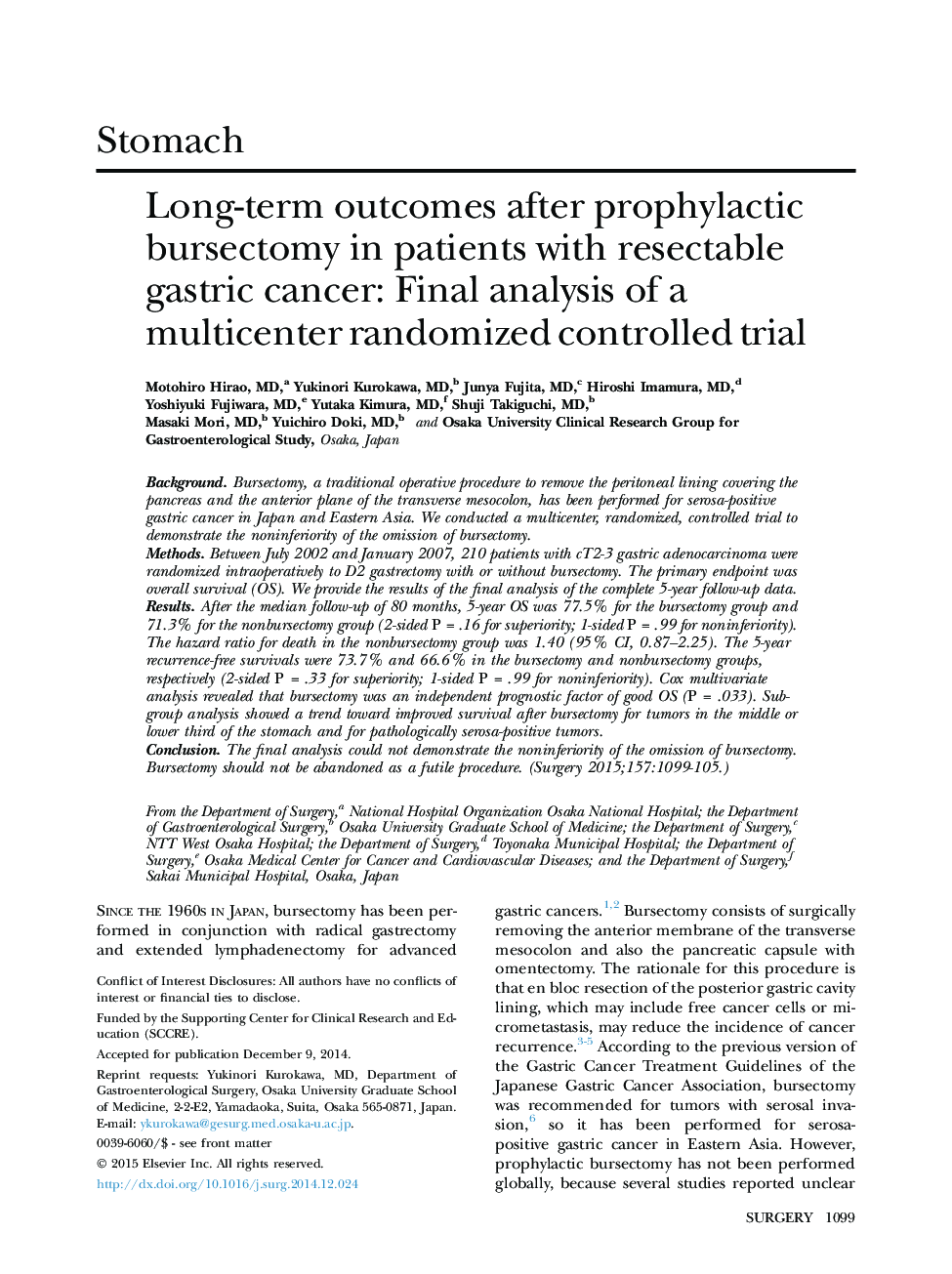| Article ID | Journal | Published Year | Pages | File Type |
|---|---|---|---|---|
| 6255154 | Surgery | 2015 | 7 Pages |
BackgroundBursectomy, a traditional operative procedure to remove the peritoneal lining covering the pancreas and the anterior plane of the transverse mesocolon, has been performed for serosa-positive gastric cancer in Japan and Eastern Asia. We conducted a multicenter, randomized, controlled trial to demonstrate the noninferiority of the omission of bursectomy.MethodsBetween July 2002 and January 2007, 210 patients with cT2-3 gastric adenocarcinoma were randomized intraoperatively to D2 gastrectomy with or without bursectomy. The primary endpoint was overall survival (OS). We provide the results of the final analysis of the complete 5-year follow-up data.ResultsAfter the median follow-up of 80Â months, 5-year OS was 77.5% for the bursectomy group and 71.3% for the nonbursectomy group (2-sided PÂ =Â .16 for superiority; 1-sided PÂ =Â .99 for noninferiority). The hazard ratio for death in the nonbursectomy group was 1.40 (95% CI, 0.87-2.25). The 5-year recurrence-free survivals were 73.7% and 66.6% in the bursectomy and nonbursectomy groups, respectively (2-sided PÂ =Â .33 for superiority; 1-sided PÂ =Â .99 for noninferiority). Cox multivariate analysis revealed that bursectomy was an independent prognostic factor of good OS (PÂ =Â .033). Subgroup analysis showed a trend toward improved survival after bursectomy for tumors in the middle or lower third of the stomach and for pathologically serosa-positive tumors.ConclusionThe final analysis could not demonstrate the noninferiority of the omission of bursectomy. Bursectomy should not be abandoned as a futile procedure.
